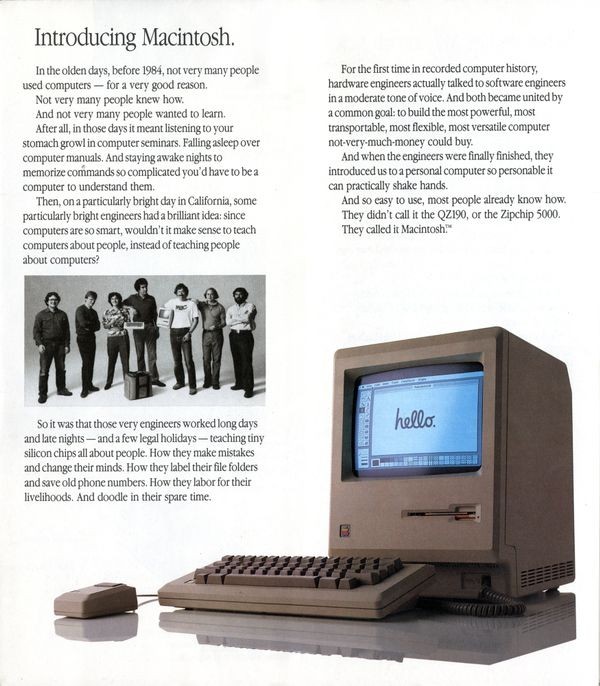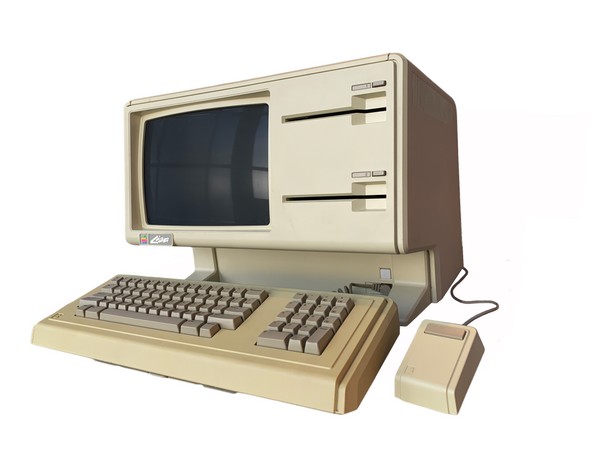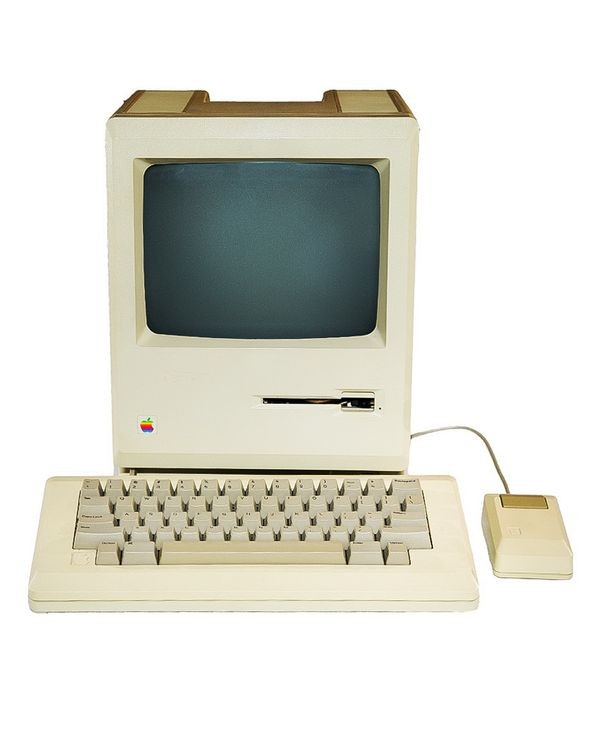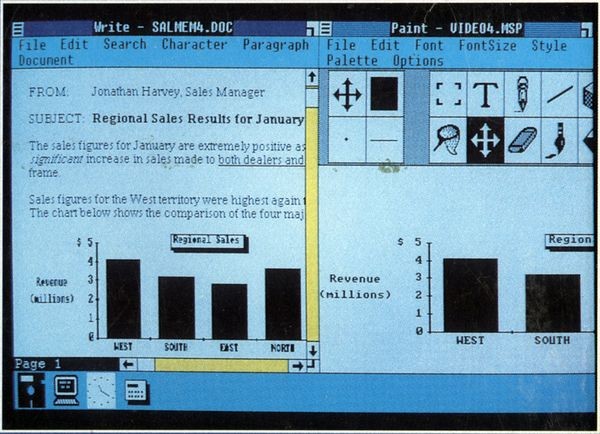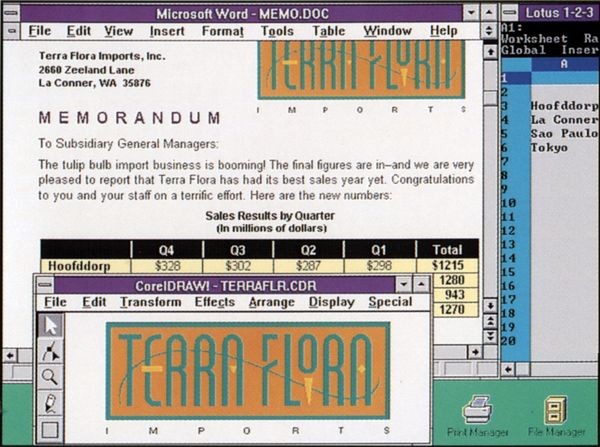Saying it With Pictures
Early Macintosh screenshot
The Apple Macintosh graphical user interface was based on WIMP: Windows, Icons, Menus and Pointing device. This photo shows all four as used by an accounting application.
Saying it With Pictures
Schoolchildren, secretaries, and shopkeepers don’t want to memorize obscure commands. So, in order to become everyday tools, computers had to communicate with people simply and easily.
The graphical user interface (GUI) let people control computers using onscreen icons and images rather than by typing commands. It transformed the experience, making computing intuitive and visual rather than daunting and technical.
Apple Macintosh advertisement
Apple’s “1984” Superbowl commercial, introducing the Macintosh, inaugurated a well-executed advertising campaign highlighting ease of use, letting “the rest of us”—not just nerds—use computers. “Wouldn’t it make sense to teach computers about people, instead of teaching people about computers?”
View Artifact DetailApple’s Macintosh
Computer pioneers experimented with icons and pointing devices (like the mouse) decades before Apple unveiled its Macintosh in 1984. But it was the Mac that introduced the idea to the general public.
The Mac’s coming out party was a mass media phenomenon, the 1984 Super Bowl. A now-legendary commercial invited viewers to reject conformity and explore a new way of computing.
Apple followed its original Macintosh with varied desktop and portable models, and a companion LaserWriter printer. Macs quickly became the choice of artists and designers, reflecting its visual approach.
Apple Lisa 1
Apple's first computer with a Graphical User Interface was a market failure because it was too expensive and too slow. Steve Jobs had initiated the project but CEO Mike Scott didn't allow him to run it, so Jobs joined the Macintosh team instead.
View Artifact DetailApple Macintosh
The innovative Macintosh — Apple’s second attempt at a GUI-based personal computer, following the failure of the Lisa — was a small, self-contained personal computer with a much-improved, Alto-like graphical desktop. Graphic designers, artists and educators quickly adopted it.
View Artifact DetailMicrosoft Opens Windows
The Macintosh offered an engaging, visual way to interact with computers. Why couldn’t IBM’s PC do that?
Programmers set out to show that it could, developing graphics-based operating systems for PCs such as IBM’s TopView and Digital Research’s GEM.
In 1986, Microsoft introduced Windows 1.0, which emulated the Mac’s approach…through not its performance. Four years later, Windows 3.0 got many of the bugs out. And a $10 million advertising campaign got the word out.
“IBM compatible” PCs and Windows reinforced each other’s popularity. By the mid 1990s, more than 95% of computers worldwide ran Windows.
Windows 1.0 Screenshot
Windows 1.0 provided limited multitasking of existing MS-DOS programs, controlled by a simple graphical interface that supported only tiled windows.
View Artifact DetailWindows 95 screenshot
Microsoft Windows 95 was a major improvement over Windows 3.1. In addition to the “Plug and Play” feature for easily installing new devices, it introduced the taskbar and Start button menu to the desktop.
View Artifact DetailWindows 3.1 screenshot
Recognizing demand for graphical user interfaces like that of Apple’s Macintosh, Microsoft released Windows 1.0 in 1985 (not widely adopted until version 3.1 in 1992). By then, an IBM/Microsoft collaboration on operating system OS/2 had dissolved. Microsoft saw 3.1 as a bridge to its new operating system, NT.
View Artifact DetailMicrosoft Windows 95 launch, New York City
Over 70,000 people watched the Windows 95 launch via satellite. The Empire State Building glowed with its logo. People lined up outside stores at midnight to buy a copy. Within two years, it was on more computers than any other operating system.
View Artifact Detail
